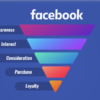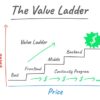Email Marketing
How To Build A Minimum Viable Product On A Budget
Every entrepreneur dreams of turning a business idea into success, wealth, and a positive impact. But not everyone has the resources to bring those ideas to life. That’s where a Minimum Viable Product (MVP) comes in.
An MVP is a way to test and validate your business idea without a huge investment. It lets you build and experiment on a limited budget, giving you a chance to confirm your concept before committing fully. In this guide, I’ll show you a powerful method to build an MVP without draining your wallet—one that launched a business sold for $1.2 billion ten years later.
Let’s get started.
Building a Business Without Capital
Many people have great business ideas but often hold back, thinking, “Can I build this without capital?” The truth is, yes, you can. Russell Brunson, co-founder of ClickFunnels, says his platform was created to help entrepreneurs market their products and ideas without taking on venture capital. Following this approach, ClickFunnels generated $100 million in revenue within three years—all without outside funding.
The lesson here is clear: with the right tools, you can start a business without large amounts of capital.
Testing Your Idea with an MVP
The MVP approach helps you gauge demand for your idea in the real world before investing too much. It’s the smart way to test if your product resonates with your audience.
Types of MVPs
There are various MVP approaches to validate a business idea. Here are five of the most popular:
1. Product Explainer MVP
This is one of the simplest ways to test an idea. Create a short video explaining your product and gauge interest based on pre-orders, sign-ups, or feedback. Dropbox used this to gain traction before fully developing its product.
2. Single-Feature App MVP
Focus on developing just one core feature. WhatsApp started as a simple app displaying users’ status, which later evolved into a full messaging platform.
3. Concierge MVP
Instead of using technology, you manually provide the service. Airbnb initially validated its concept by renting air mattresses in a shared apartment, showing there was demand before investing in a full platform.
4. Preorder Campaign MVP
Gauge interest by asking people to pay for your product before it’s built. The Pebble Watch raised over $10 million on Kickstarter this way, showing there was demand before production began.
5. Wizard of Oz MVP
This is where you present your product as fully functional, but perform tasks manually behind the scenes. Zappos started by listing local shoe store inventory online; when orders came in, founder Nick Swinmurn would go buy the shoes himself.
For this guide, we’ll focus on the Wizard of Oz MVP method because it’s budget-friendly and can fully validate your business idea.
7 Steps to Building Your MVP with the Wizard of Oz Method
Using Zappos as an example, here’s how to build an MVP on a budget:
1. Identify a Real Problem to Solve
Look for daily frustrations people face. Founder Nick Swinmurn realized people were often frustrated by limited shoe selection in stores, sparking the idea for Zappos.
2. Analyze the Competition
Understand what’s lacking in the current market. At the time, people were willing to order shoes by mail, which suggested there was demand for buying shoes without trying them on first.
3. Play to Your Strengths
Leverage your existing skills and experience. Nick’s background in online businesses helped him recognize the potential of an online shoe store.
4. Develop a Valuable Solution
Offer a convenient alternative. Zappos provided a wide selection of shoes online, allowing customers to shop from home.
4. Validate the Idea with Minimal Cost
Use the Wizard of Oz approach by creating a “mocked-up” version of your product and manually handling orders. Nick partnered with a local shoe store to sell their shoes online, manually fulfilling orders to gauge demand.
5. Set Validation Goals
Track your early metrics, like consistent orders or repeat customers, to confirm demand before expanding.
6. Scale Your Business
Once you have proof of concept, look to scale. Nick eventually attracted investment, which helped grow Zappos into a billion-dollar company.
Save Time and Money Building a Website and Taking Payments
To turn your idea into reality, you need a professional website that accepts payments. ClickFunnels makes this easy, even if you don’t have web design skills. You can set up a complete website with payment capabilities in hours, without needing to hire developers.
Benefits of ClickFunnels:
- Create a sales funnel and start accepting payments within hours
- Drag-and-drop design, no coding required
- Integrates with major payment systems
- Customizable templates for any product or service
- Free 14-day trial to get started risk-free
Final Thoughts: Building an MVP on a Budget
Zappos is a prime example of launching a billion-dollar business with little capital. By using the Wizard of Oz MVP method, you can validate your idea and grow strategically without a huge budget.
With tools like ClickFunnels, you can turn your MVP idea into a working product quickly and easily. Try the 14-day free trial to kickstart your MVP today and bring your business idea to life!
>>>Join The One Funnel Away Challenge<<<






























